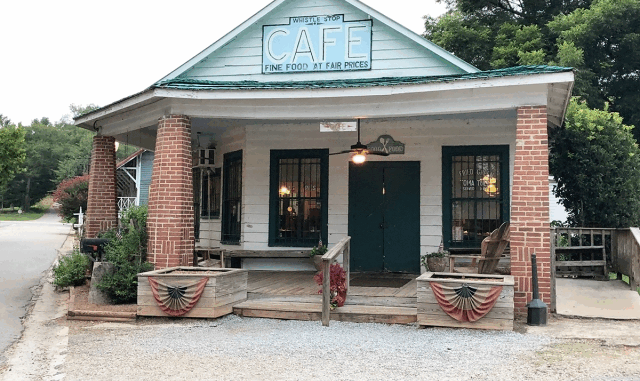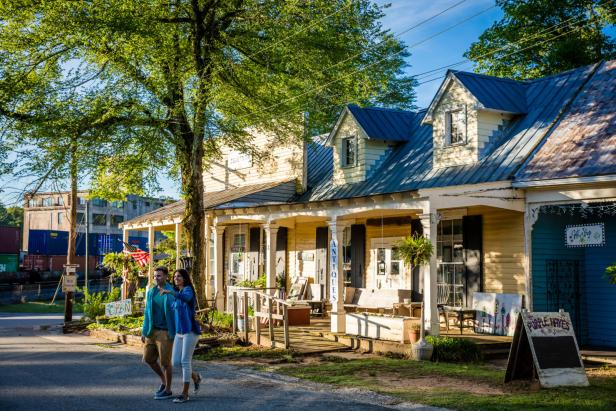
Flames in the Night
Late in Fried Green Tomatoes, the story shifts from Whistle Stop’s vibrant past to a present day marked by decline, loss, and fading memory. One of the most symbolic scenes occurs when Evelyn Couch visits the Threadgoode home—once bright with life, now abandoned—and finds it engulfed in flames. The fire, sudden and eerie, is more than the destruction of a house. It represents the fading of a generation, the erasure of a forgotten town, and the sorrow of memory slipping into ash.
To Evelyn, the fire is not just a surprise—it’s a turning point. It forces her to reckon with the impermanence of everything she’s just begun to value. This home once belonged to Idgie, Ninny, and the living history of Whistle Stop. Watching it burn feels like watching the past itself disintegrate.
Evelyn’s Emotional Awakening
Throughout the film, Evelyn’s journey is marked by small rebellions and quiet realizations. Her friendship with Ninny opens the doors to stories that awaken something long dormant in her—courage, independence, self-worth. The burning of the Threadgoode house shakes her. It is a brutal reminder that time does not wait. That unless we act, all that we care about can be lost.
As the fire lights the dark sky, Evelyn stands helpless. The world she has only recently come to love—the stories of Ruth, Idgie, Sipsey, and Whistle Stop—suddenly seems fragile and far away. The house, a symbol of everything that once was, becomes a funeral pyre for a bygone era.
The Loss of a Place, the Loss of Belonging

In a deeper sense, the burning of the house is a metaphor for the disintegration of community. Whistle Stop, once a haven of resistance and unconventional love, is now nearly empty. Its landmarks fade, and its stories risk disappearing with them.
The Threadgoode house is not just a home—it’s a witness. It watched Idgie and Buddy play, saw Ruth return, sheltered love, grief, and healing. When it burns, that witness is silenced. The community, already fractured by time and change, loses one more piece of itself.
Evelyn, who never lived in the house, nonetheless feels its loss personally. She has come to see Whistle Stop as a part of her own story. Its people have changed her. And in that fire, she realizes just how easily everything we cherish can be erased if we don’t preserve it.
Memory and Mortality
Fire, in literature and film, often symbolizes both destruction and renewal. But in this scene, the tone is more elegiac. The house is not reborn—it is gone. The fire brings no revelation or rebirth. Instead, it deepens the film’s meditation on memory and mortality.
Ninny’s stories were acts of remembrance. They gave Evelyn strength, inspired her transformation, and connected her to a history she didn’t know she needed. But the fire reveals a painful truth: memory alone cannot stop time. If stories are not preserved, if places are not protected, they vanish.
The ashes of the Threadgoode home are a warning—and a call to action. They ask us what we are doing to keep history alive, whose stories we value, and what we are willing to do to preserve them.
Evelyn’s New Purpose
The aftermath of the fire is never shown in detail, but its effect on Evelyn is clear. It crystallizes her need to act. No longer content to be a passive listener or a timid observer, she begins to take bolder steps—asserting herself in her marriage, standing up for her needs, and embracing her identity.
In some ways, the burning house clears the way for Evelyn’s final transformation. She realizes she can no longer rely on the past to inspire her. She must become the next chapter in the story. If Whistle Stop is to live on, it must live through her—through her actions, her choices, her voice.
That fire might have ended the Threadgoode house, but it ignites something new in Evelyn. A purpose. A path.
A Town on the Brink of Disappearing
Whistle Stop, by the end of the film, is a ghost of what it once was. The café is closed. The railroad is silent. The laughter and smoke of barbecue are long gone. The fire serves as a final punctuation mark on this decline. There is no dramatic rescue, no heroic firefighter rushing in to save what remains. There is only the flickering blaze and the sound of loss.
But Whistle Stop, like the stories Ninny tells, refuses to be completely erased. As long as someone remembers—someone like Evelyn—it lives. The house is gone, but the spirit of the place survives in memory, in storytelling, and in the resilience of those who carry its legacy.
The Real Power of Place
In Fried Green Tomatoes, places are more than just settings. They are characters. The café, the Threadgoode home, the woods where Idgie played—all of them hold emotional meaning. They are repositories of love, loss, defiance, and memory.
The fire, then, is not just a physical loss. It is an emotional rupture. It asks the audience to grieve, to reflect, and to question what we are doing to keep meaningful places—both literal and symbolic—alive in our own lives.
What homes, relationships, or communities have we let burn? What do we still have time to save?
Ashes and Legacy
Ultimately, the burning of the Threadgoode house becomes a powerful symbol of the film’s central message: that life is fleeting, that stories matter, and that the only way to honor the past is to live fully in the present. Evelyn takes that message to heart. She doesn’t dwell in sorrow. She moves forward—with strength, with purpose, and with the spirit of Tawanda in her heart.
The fire may have destroyed the house, but it didn’t destroy the legacy of Ruth, Idgie, Ninny, or the town they built. That legacy lives on—in Evelyn, in the audience, and in anyone who understands that the most important stories are the ones we choose to keep alive.
